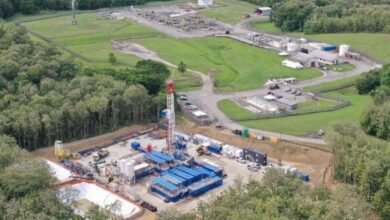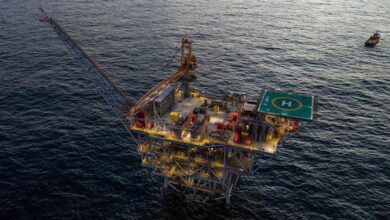Workforce competency, multi-skilling will be key to success as companies seek ways to do more with less
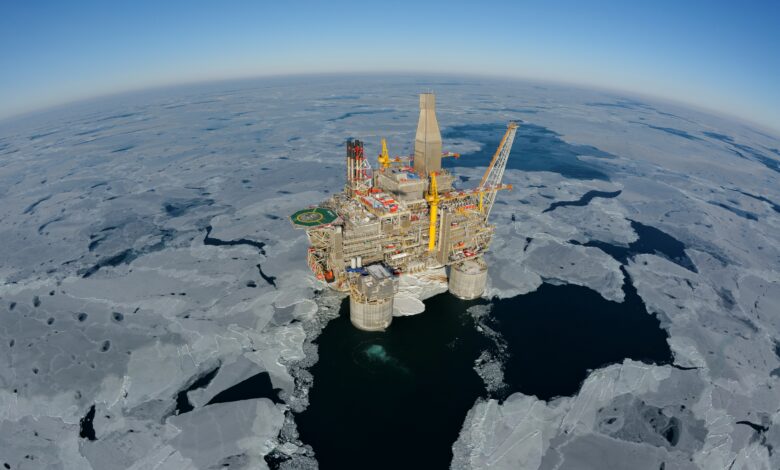
Parker Drilling’s Sandy Esslemont: Machines, technology, data will all be critical, but step changes must also be supported by drilling crews with versatile skills
By Linda Hsieh, Editor & Publisher
Sandy Esslemont is President and CEO of Parker Drilling.
Looking across your entire rig fleet, what do you see as the biggest challenges that you face as a drilling contractor?
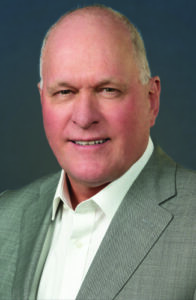
During the pandemic, the biggest challenge has probably been the movement of people. Parker is a global contractor, with the vast majority of our revenue coming from outside of the US, so we’re constantly moving people around.
It does help that we have a fairly significant localization program. However, as rigs have been stacked and crews are laid down, it’s been challenging figuring out how to keep a regular state of readiness, because you don’t always know your customer’s next move.
Sometimes a pause in drilling will turn into a longer warm stack or even cold stack, and that has considerable impact on our people and supply chain. In some cases, we’ve had to have crews stay for really long hitches because we couldn’t get people into the country to relieve them. That means more planning to manage fatigue.
Along with that, I would say the retention of experienced personnel and maintaining their motivation going forward is another big challenge. In some cases, we’ve taken our experienced personnel – toolpushers and drillers, for example – and asked them to perform lower-level tasks in order to retain that expertise in our crew.
Do you mean the crew members get demotivated when they’re asked to do something below their skill level?
No, I think they understand that it’s the right thing to do, but just because you’re an experienced driller doesn’t mean you’re a good floorhand anymore. It might’ve been 10 years or more since they last worked as a floorhand.
This means we’ve had to go through some additional on-site training to help these experienced guys re-adjust to their new positions and to ensure that we’re not sacrificing any quality or safety, which are still non-negotiable, of course.
Have these challenges gotten any better since the pandemic began?
It’s better in the sense that we know what to do now. We know how to manage it. Parker quickly utilized the capability from our emergency response planning and had each location create an Infectious Disease Emergency Plan with guidance from Corporate. Each location is under a level I through IV severity depending on the level of COVID cases. For each level, there are different prescribed actions to be taken. It has worked well for us.
In some locations, there is still a 14-day quarantine on both sides of your crew change. In those cases, we’ve deployed people from stacked rigs so we have someone on the rig, someone in quarantine and someone traveling, just to keep one rig going.
I do see that governments and customers are beginning to shorten their quarantine requirements. Companies are also getting better at testing and contact tracing. When we see a spike in cases in one spot, we know how to deal with it much better.
Also, our customers have been supportive of the way we have managed through the COVID crisis and, in many cases, we have taken the lead and been able to help them manage through their own situations.
Have these challenges led to an increase in downtime for your rigs?
Not at all. At Parker, we’re very proud that we haven’t had a single hour of NPT caused by COVID. As I mentioned earlier, the fact that we have such a large local crew complement has really worked to our advantage. For example, in Russia and Kazakhstan, more than 90% of our crew members are from those countries. That means we’re more flexible because we’re not flying hundreds of people around the world.
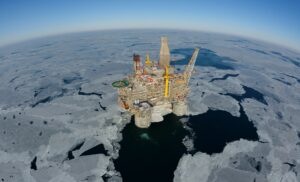
Has the pandemic led to any changes in the way Parker operates in the long term?
One thing that COVID has done is accelerate Parker’s reorganization to a new business model, where we are organized by geomarkets rather than vertical product lines. This means the leadership in each geomarket is responsible for all of Parker’s services, including not just drilling rigs but also other services like tubular running and pressure control equipment.
I think this transition will fit well with our strategy going forward, which is to do more with less. We have to figure out a way to do more with less people, with less equipment, with less overhead and, ultimately, at less cost for the operators.
What that means is we’ll accelerate the use of automation and digitization across the company. We’ve already made a lot of progress with what we call workforce analytics. It’s a set of tools and processes to help us figure out, for example, the optimum number of crew members for a specific task. Where should they be? What should they be doing? What’s their relationship to the red zone?
As a drilling contractor, we have so many repetitive tasks on a rig that lend themselves to process automation. You’d be surprised at how much productivity and efficiency can be gained by simply having the right person in the right place at the right time, and somebody else doing something else at the same time somewhere else. That’s an initiative that has really been accelerated by the COVID pandemic.
Off the rig, we’re also finding ways to improve productivity and efficiency in the office. At Parker Drilling in Houston, we have developed a working methodology that will allow people to choose the best work location solution for their particular situation, be it at home, in the office, on the road, or a combination of all three. All we ask is that our employees use the technology available to get their job done as and when required.
We want to create a working environment at Parker where people enjoy their job and work seamlessly with their colleagues around the world.
Going forward, about a third of our office-based workforce in Houston will probably not come back to the office on a regular basis. Our workforce has proven to be extremely productive working from home. Another third of our staff will likely be in the office two to three days a week. It wouldn’t necessarily be the same two to three days a week but whatever is required for collaborative meetings. The remaining third is probably going to be in the office most of the time. With this approach, we believe we can effectively halve our real estate footprint without losing any personnel.
It also means there will be more of a focus on productivity as opposed to just being present. Our office-based staff have now spent nearly a year working remotely, and we’re finding it surprisingly productive.
We’re in the process of relocating in Houston, and the layout of our new office is going to be completely different. There will be fewer offices and more collaborative, open spaces and significantly better internet connectivity for virtual interaction around the world. People will be able to come and go as they need to get the job done.
There’s going to be a significant shift in the head office environment at Parker as a result of COVID. It’s a bit of an experiment, and I’m sure there will be some corrections along the way, but it’s definitely the way we’re heading.
We’ve seen a historic downturn over the past year. Do you believe that we’ve been building toward this downturn over the past two decades with too much focus on growing production and maybe not enough focus on returns?
To a certain extent, we’ve certainly been victims of our own success. We’ve always been very good at meeting downturns with technological progress, and the shale revolution was no different. We used technology to effectively meet what we perceived to be never-ending demand growth.
Two things have changed our future demand perception. First, the realization and acceptance that climate change, an existential threat to humanity, is partly fueled by fossil fuel CO2 emissions. Second is COVID, which has shown us the effect of demand destruction and has accelerated the debate on clean energy. So, we now have too much supply. It’s no longer about ever increasing production, but rather curtailing production to bring demand/supply in balance and creating returns for capital investors.
The incremental barrel is a lot easier to produce these days. Now we’re talking about peak demand for oil, which will likely happen sometime between now and 2030. We’re entering a new phase where it’s not all about production. It’s as much about managing the supply/demand balance. As a drilling contractor, I think we’re looking at a period of adjustment. We’ll still be around 30 years from now, but the world will be a very different place. We may be drilling as many geothermal wells as we’re drilling oil and gas wells. Or we may be drilling water wells – who knows?
Regardless, the world will still need the subsurface and drilling expertise that drilling contractors have. I do believe there is a rosy future for those of us who survive this particular downturn, but it can’t be all about production anymore. If we want to get these cycles out of the business, we need to have more stability in the supply/demand equation. In my mind, that means we’re entering a phase where OPEC+ and the US will be the ones that ultimately control the oil price.
In that scenario, is there still a role for shales to play?
There will always be a role for shales to play, but I don’t think you’re ever going to see US production back where it was. The shale business will face political headwinds from a fracking perspective. It’s also not been great at making returns for investors.
Some of that will get fixed, and shale will continue to be an important part of the mix going forward, but I don’t see it booming the way it did before. My belief is the American production landscape will probably settle somewhere around 10 million barrels per day, and there will be a steady state of offshore/onshore, conventional/unconventional mix in that production.
Are there any levers that drilling contractors could pull to ensure we’re more successful than we have been in recent years?
Make no mistake, we’re a great industry, and we have grit and determination. We do things that other industries would have given up by now, but we need access to capital, which is challenging these days.
I would also argue that we need to be grabbing a bigger slice of the pie. Drilling contractors could be and should be doing more of the services around wellbore construction. Rather than just providing the rig, let’s also run the casing and get involved in the cementing. Perhaps there’s more we can do in terms of the life cycle of the well. We need to broaden the service portfolio beyond just providing the rig.
There also needs to be more consolidation and a reduction in the rig supply. We need to exercise stronger capital discipline, with a focus on liquidity. We’ve got to get our investors back and make sure they see returns in this business. We have to embrace and develop automation and digital technologies that minimize risk and optimize drilling performance. The industry has done a fantastic job in terms of year-over-year improvements in the drilling process, but there’s still more performance optimization that can be achieved. We also need to embrace ESG, find ways to reduce emissions and participate in the energy transition.
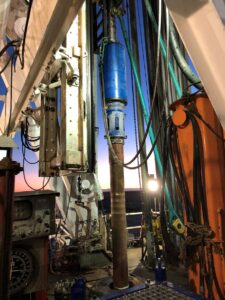
Do you see drilling contractors as a whole embracing ESG as sufficiently as we need to?
Yes, I really do. It was probably only two or three years ago when many people in our industry didn’t even know what ESG stood for, but now everybody is embracing ESG and trying to figure out the right way forward.
At Parker, when I came onboard, we set up a task force to define our own carbon footprint baseline. That’s going to help us measure how we are reducing emissions going forward so we can share actual metrics with our customers. We also plan to release our first sustainability report next year.
Drilling contractors have continued to prioritize automation and digitalization, even in this downturn. How is Parker approaching this?
The focus is clearly on using data. We capture so much data on a daily basis, and it’s time to really utilize that data. We need to be drawing conclusions from that data and then implementing plans and processes to capture the value of those conclusions. The next step after that will be artificial intelligence and automating the entire process.
I recognize that there has been a short setback with COVID, but at the end of the day, once things have been adjusted and when capital returns to the industry, there will have to be an accelerated effort in this area. It won’t be optional. Customers are going to demand more and more efficiency. They’re going to demand less people around, less potential for risk, more automation and more streamlined processes.
The challenge is that developing and using these types of technologies comes at a cost. Sometimes they take years to develop. Everybody likes to think that – ultimately – the prize is you get paid for that down the road, but that has proven to be a challenge.
Still, to survive as a land drilling contractor, I believe you’ll have to embrace and utilize these technologies.
Is automation and digitalization the biggest opportunity that drilling con-tractors have to make significant changes in drilling performance and cost reduction?
First of all, as a drilling contractor, we know how to drill wells, we know how to manage complex supply chains, and we know how to minimize risk and keep people safe. That’s our core business, and competency is important. I don’t think all of the step change in drilling performance is going to come from machines or technology or data.
I think we also need competence and multi-skilling of people – doing more with less, as I mentioned earlier. If you have a competent multi-skilled crew, then when they’re not drilling, they can be running casing, for example. Our challenge is going to be constantly managing the up/down operating/stacked cycles in our business and keeping those competent and multi-skilled people engaged through those cycles.
I also think the power of the learning curve is important. What I mean is that if you have continuity, if you have visibility of revenues and if you have good partnerships with your customers, it’s amazing how powerful that learning curve is in terms of performance improvements, especially with repetitive tasks. However, if you’re bouncing from one customer to another, one well here, one well there, and they all have different ways of doing things, you’ll never see that learning curve.
I think there are a lot of opportunities around our people where drilling contractors can look to improve drilling performance, as opposed to just machines or just digitization. We need both.
Drilling contractors have been considering the need to evolve their business models for years, so that they can have a bigger share in the value they create for operators through improved efficiency. How do you view the traditional dayrate model? What changes, if any, would you like to see for the future?
I don’t think the dayrate model is dead; it still has applicability in certain areas for certain clients with certain projects. But with more sophisticated customers and projects, I think the best model is a performance-based contracting model. The drilling contractor will have to take some risk – so we’ll need to make sure the risk can be understood and clearly defined – but it will give us the ability for a higher reward.
I think there is so much work that we can do to improve how oil and gas operators and drilling contractors contract together, how we align our goals.
What we find at Parker is that, so long as we have alignment upfront – it can be alignment on a dayrate, on a performance contract or on a turnkey – if we share a common goal and we can work with that operator more as a partner, then it’s always a win-win. The customer gets the best performance. They get that learning curve. They get predictability, reliability and risk mitigation. They get everything. And the contractor is happy because they can keep their crews and all the investment made in their training.
I think the contracting business model is something that we should all look at and strive to improve. It’s in everyone’s interest to get better alignment between the drilling contractor and the customer.
It also helps in downturns because it encourages us to work together to figure out the right solution. In a partnership, we’re always thinking ahead to the recovery. It allows us to make sure the rig is ready for the customer to pick up when they need it. It doesn’t have to be end of contract, stacked and goodbye.
Do you see that operators have become more or less open to new ways of contracting during this downturn?
I would say that we haven’t quite got there yet, but there are signs that they are being more open. And they’re being more open because they’re in the same boat as we are. They’re recognizing that we can help each other, so there’s more willingness to discuss different contracting strategies.
I think the industry is going through an “a-ha” moment right now, and everything that we used to do is up for grabs. The way we used to contract, the way we used to operate, the way we used to work together, the way we used to work – it’s all up for discussion.
What is your outlook on a recovery for the oil and gas industry this year?
Obviously, there’s still a lot of uncertainty right now, and I’m not convinced there’s going to be a recovery this year. I think 2021 is going to be another challenging year.
It’s been predicted that energy demand may not get back to 2019 levels until 2025. So until then, companies will have to focus on mitigating risk, improving safety and quality, and optimizing performance. There will always be room for companies like Parker Drilling that focuses on these areas. DC



